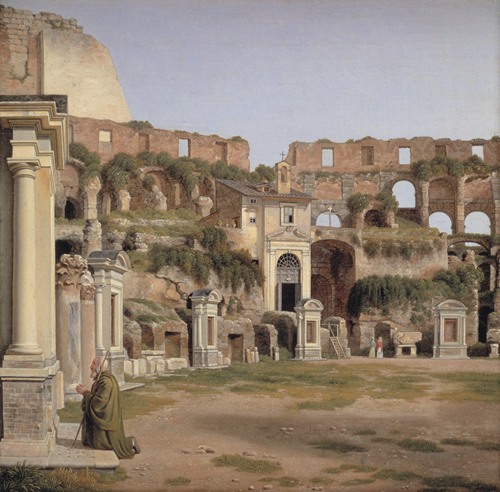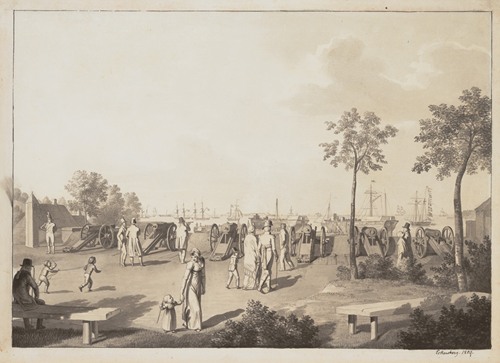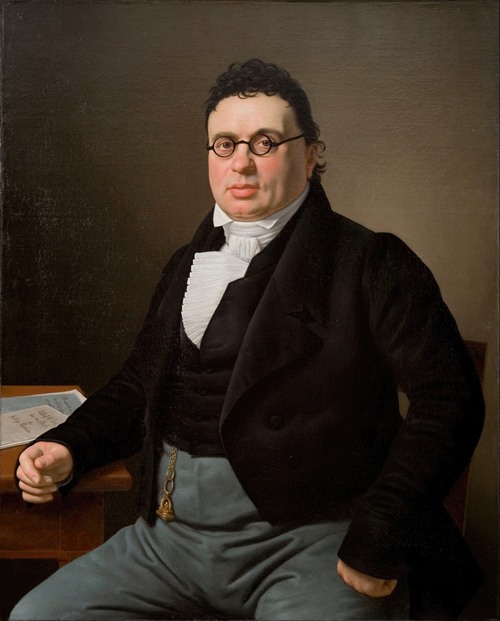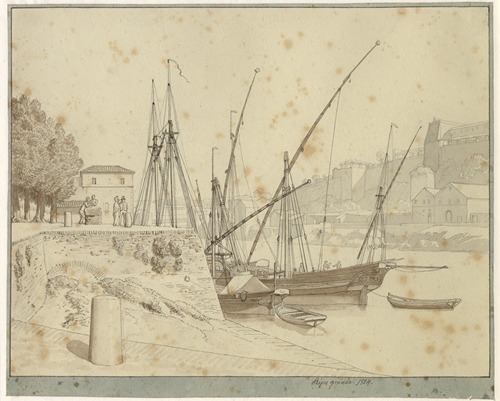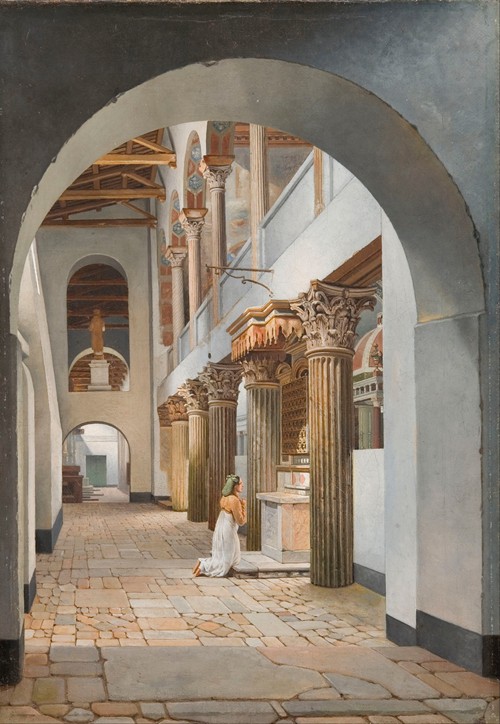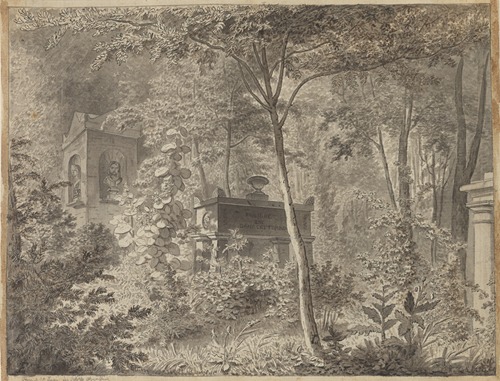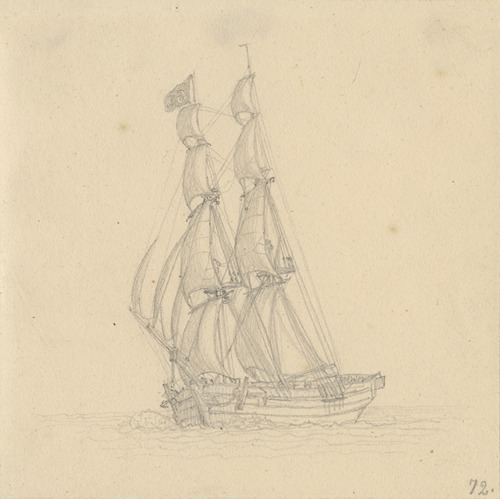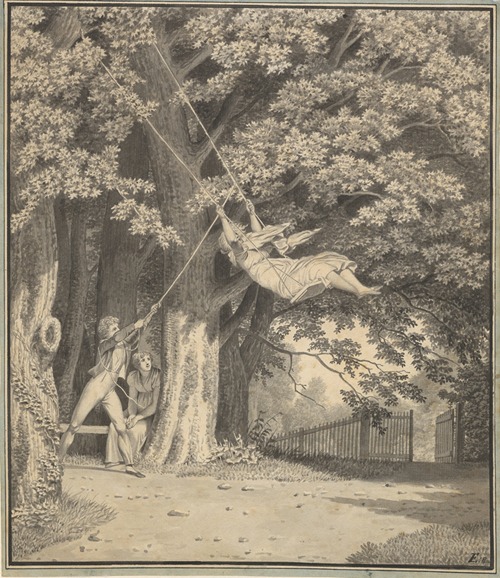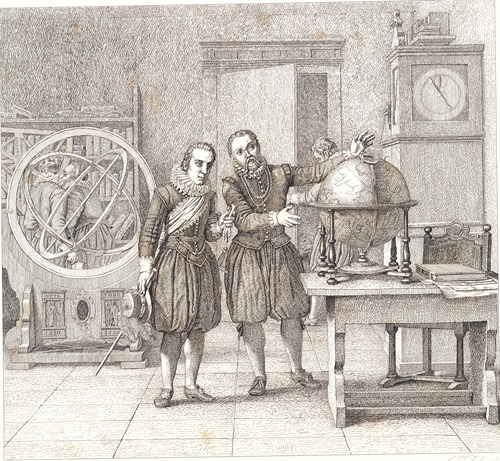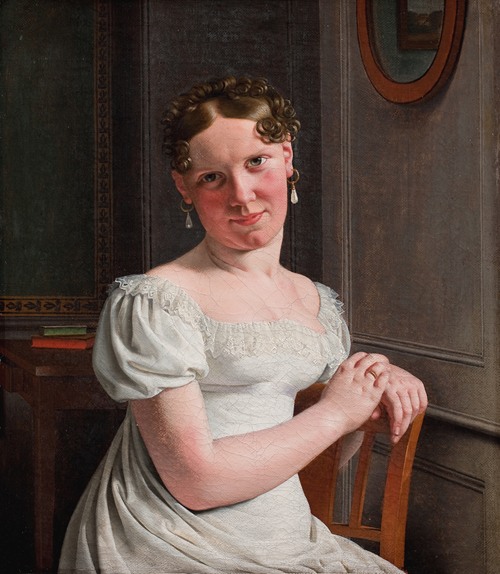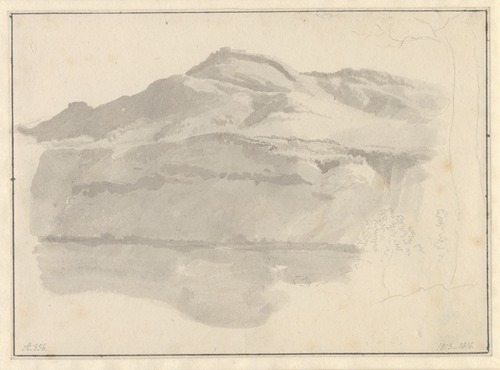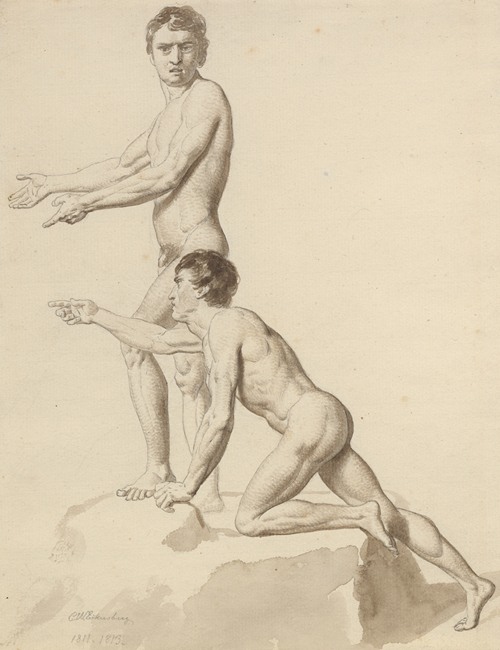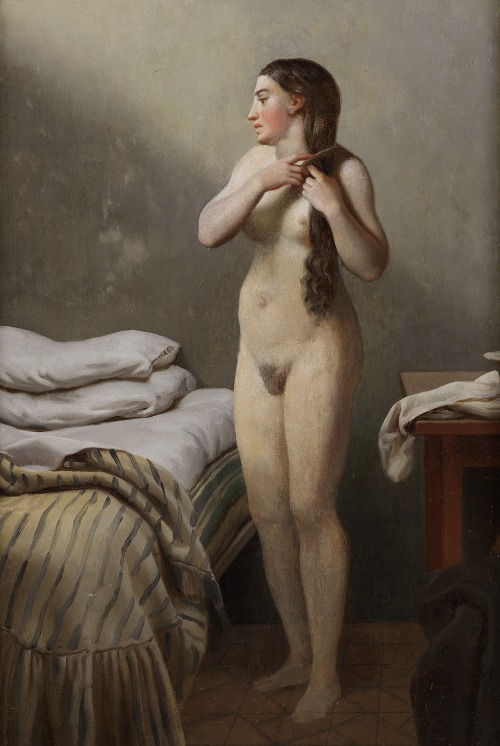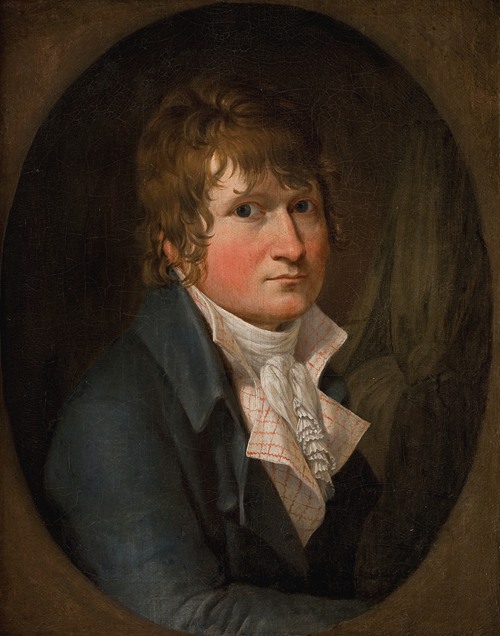
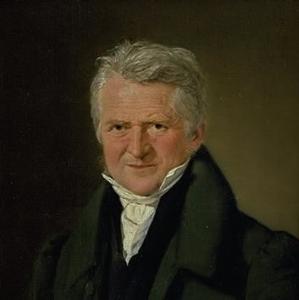
Christoffer Wilhelm Eckersberg was a Danish painter. He was born in Blåkrog in the Southern Jutland region of Denmark. He went on to lay the foundation for the period of art known as the Golden Age of Danish Painting, and is referred to as the "Father of Danish painting".
On 2 January 1783, Christoffer Wilhelm Eckersberg was born in Blåkrog in the Duchy of Schleswig (now in Aabenraa Municipality, in the southern part of Jutland in Denmark), to Henrik Vilhelm Eckersberg, a painter and carpenter, and Ingeborg Nielsdatter. In 1786 the family moved to Blans, a village near the Alssund, where he enjoyed drawing pictures of the surrounding countryside, and taking sailing tours in his father's boat. After confirmation he began his training as a painter under church and portrait painter Jes Jessen of Aabenraa (1797–1800). He continued his training at age 17 under Josiah Jacob Jessen in Flensborg, where he became an apprentice in May 1800. He, however, had his sights set on being accepted at the Royal Danish Academy of Art (Det Kongelige Danske Kunstakademi) in Copenhagen.
Still under apprenticeship Eckersberg produced proficient drawings and paintings. Having amassed some money, including financial support from local well-wishers, he arrived at Copenhagen's Tollbooth on 23 May 1803. He was accepted into the Academy without payment in 1803 where he studied with Nikolaj Abraham Abildgaard, among others.
He made good progress, painting historical paintings, portraits and landscapes. However, friction between him and Abildgaard impeded his advancement, and he did not win the Academy's big gold medal until 1809, after Abildgaard's death. He also worked to earn living money as a hand laborer, and he made drawings for copperplate etchings.
Although he received promise of a travel stipend in conjunction with the gold medal, the actual funds would not be made available until 1812. On 1 July 1810, he married E. Christine Rebecca Hyssing against his wishes, in order to 'legitimize' a son, Erling Carl Vilhelm Eckersberg, that was born to her. Erling eventually followed in his father's footsteps with an academy education, and a career as a copperplate engraver.
Eager to travel, not only on account of his desire to stretch his artistic skills and knowledge, but also in order to escape the reality of his marriage, he made other arrangements for the financial support needed that would allow him to travel. On 3 July, a few days after the wedding, Eckersberg began his travels out of the country. Along with Tønnes Christian Bruun de Neergaard, writer, enthusiastic art lover and financial supporter, he made his way through Germany to Paris. Here he studied under neoclassicist Jacques-Louis David from 1811 to 1812. He improved his skills in painting the human form, and followed his teacher's admonition to paint after Nature and the Antique in order to find Truth. It was here that he developed a lifelong friendship with his Paris roommate and fellow artist Jens Peter Møller, and with engraver Johan Frederik Clemens, Jens Juel's collaborator.
After two years he traveled further via Florence to Rome where he continued his studies between 1813 and 1816. He worked on improving his skills as a history painter, and enjoyed painting smaller studies of the local life and area. He lived there three years among a store group of artists, with Bertel Thorvaldsen as the cultural head. Eckersberg and Thorvaldsen developed a close lasting relationship, and the master served the younger Eckersberg as both loyal friend and advisor. Eckersberg painted one of his best portraits, a portrait of Thorvaldsen, in Rome in 1814, which was donated to the Academy of Art. Life in Rome agreed with him, and he was greatly affected by the bright southern light he experienced there. He produced a large body of work during those years, including a number of exceptional landscape studies.
His divorce from Hyssing was finalized during his stay out of the country, and on 2 August 1816 he had returned to Denmark.
Shortly after his return to Denmark Eckersberg arranged for his admission into the Academy, and received as the subject of his admissions painting the Norse legend, the Death of Baldur. On 8 February 1817 he wed Elisabeth Cathrine Julie Juel, daughter of Jens Juel, portrait painter and professor at the Academy. They had two sons and four daughters before her death in 1827.
He was admitted as a member of the Academy in October 1817, and was named professor there in 1818, having assumed the vacant professorship left after the death of Nikolaj Abraham Abildgaard in 1809. The Academy had waited to fill the position until Eckersberg returned to Denmark from his student travels, while delaying the attempts by Abildgaard's disciple, Christian Fædder Høyer, and by Christian Gotlieb Kratzenstein-Stub and J. L. Lund to seek the same position. Finally the Academy awarded the position not only to Eckersberg, but also to Lund.
A year after the death of his wife Elisabeth in 1827, he married her sister Susanne Henriette Emilie Juel, with whom he also had several children.
He was director of the Academy from 1827 to 1829. His eyesight failed him in later life and he had to give up painting. He died in Copenhagen of cholera on 22 July 1853 during the great epidemic. He is buried in Copenhagen's Assistens Cemetery.
